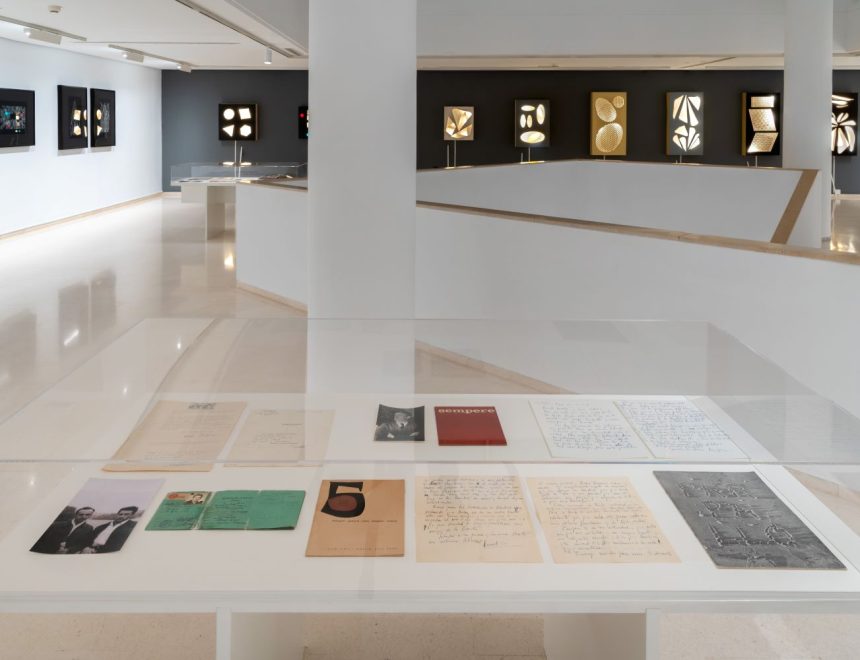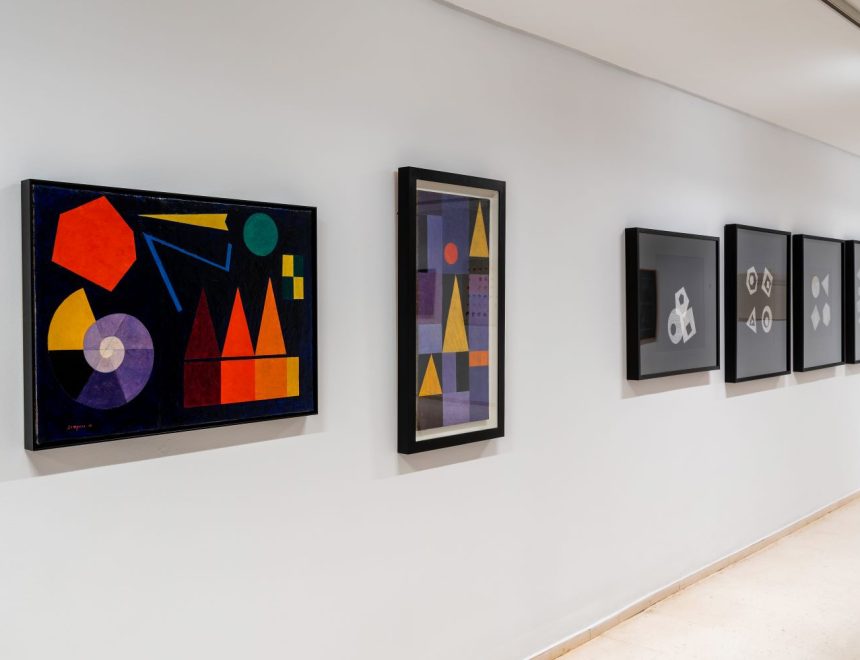Sempere in Paris
As part of the commemoration of 100 years after the birth of the Alicante artist Eusebio Sempere and in collaboration with the MACA, Museum of Contemporary Art of Alicante, the IVAM offers an exhibit about Eusebio Sempere limited to his time in Paris, a period of time that extends from early 1949 to January 1960.
Despite his small successes, Sempere lived through difficult times, but he produced two very important series in his career: on the one hand, the series of gouaches on cardboard, the so-called Paris Gouaches; on the other, the luminous reliefs, a type of artifact with electrical installation which simulates movement through the different alternately illuminated planes where the geometric shapes are cut out. Although he first began using gouaches, with simpler and cheaper materials and workmanship, the luminous reliefs coexisted with them until the early sixties. And both respond to the same aesthetic concern. The luminous reliefs are one of Sempere’s most important contributions to optical and kinetic movement. A very important number of works from these two series are preserved in the collections of the IVAM and the MACA.
In Paris, Sempere builds a universe of personal and artistic relationships that are the basis of his personality and which forever establish his talent. His friends at the Colegio de España school Eduardo Chillida, Pablo Palazuelo, Salvador Victoria, Lucio Muñoz and the Valencians Doro Balaguer and Vicente Castellano. His relationship with the Denise René Gallery and the geometric artists Vasarely, Arp, Schoffer, Soto, Sobrino, Mortensen, etc. His contact with avant-garde artists such as Kandinsky (through his widow Nina Kandinsky), Braque (whom he visited in his studio) or Julio González, whom he met through the latter’s friendship with his daughter Roberta. Also belonging to this period is the learning of the silkscreen technique in the workshop of Wifredo Arcay, a Cuban artist whom he met through Loló Soldevilla, a Cuban painter and cultural attaché at the Cuban Embassy in Paris, who introduced him to the artistic circles of the French capital.
All of this is reflected in the large amount of documentation that is preserved in this regard and which can be seen in the exhibit: scrapbooks, texts by the artist, press, photographs, extraordinary epistolary collections, correspondence with family members, artists, critics, etc.







